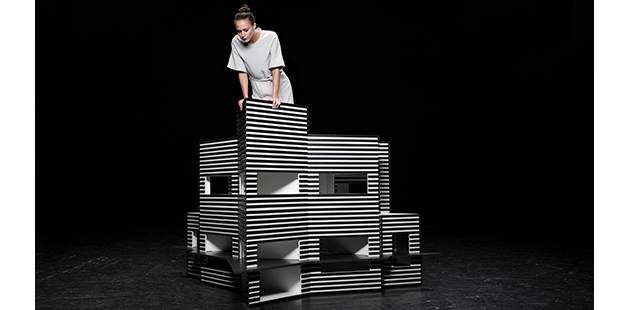 Exploring the ways that power manifests through architecture and in the built environments that surround us, Monash University Museum of Art | MUMA presents Unsettlement – an international group exhibition on display until 7 July 2018.
Exploring the ways that power manifests through architecture and in the built environments that surround us, Monash University Museum of Art | MUMA presents Unsettlement – an international group exhibition on display until 7 July 2018.
Encompassing a diverse range of media, including moving image, photography, installation and performance, the works in Unsettlement engage with specific architectural forms and histories in distinct local contexts.
Featuring artists from Indonesia, Saudi Arabia, United States of America, Italy, Iraq, Slovenia and Australia, the artworks presented register the material force and histories of architecture, and encourage a productive sense of upheaval and re-appraisal.
“Architecture provides a tangible, physical form to the amorphous forces that shape our lives,” said Charlotte Day, MUMA Director and co-curator. “It gives us a concrete starting point to address the histories, as well as the current-day economic and political influences, that define the world we inhabit.”
Unsettlement is conceived as both a contemporary condition – in which our claim to the spaces we occupy is increasingly precarious – and a strategy for artistic, social and political engagement. From subtle gestures of reclamation to more radical remodelling, the works in Unsettlement strive to confuse architecture’s functionality, undermine its authority or explode its mythologies.
In doing so, they make visible the power dynamics and infrastructures shaping our world. Of particular focus in Unsettlement are the myriad ways that state and economic power is expressed and exercised physically.
“The artists brought together in Unsettlement are highly attuned to how state and economic power both shapes and is safeguarded by the built environment,” continues Day. “This ranges from overt mechanisms of state control, such as prison camps, through to the use of the seductive language of architecture as soft power, such as in the commissioning of monumental buildings.”
A broad spectrum of architectural manifestations of power is considered in Unsettlement. Jasmina Cibic’s The Pavilion (2015) reflects on the role of architecture in the nation-building activities of the Kingdom of Yugoslavia in the early 20th century. In Dynasty (2017), Amie Siegel seizes a marble fragment from the lobby of the Trump Tower in New York to provoke questions about simulation and authenticity, wealth, trade and the corporatisation of politics in a global context.
Through their engagement with specific architectural forms, the works in Unsettlement offer insights into distinct cultural contexts and social struggles. Indonesian artist Aliansyah Caniago invites audience members to take up boxing gloves and pummel a boxing bag filled with rubble from a residential community recently demolished in Sunda Kelapa, on the outskirt of Jakarta. The work manifests the struggles and frustrations of the politically and economically disenfranchised population displaced by this rapid redevelopment.
Gunditjmara artist Hayley Millar Baker’s photographic assemblages present a personal mapping of her family history and connection to Country in southwest Victoria. They feature architectural forms that have played a central role for First Nation peoples in the region, including the Budj Bim eel trap system, basalt stone walls built with Indigenous slave labour and the Lake Condah mission, where families still gather despite the traumatic history of the site.
Meanwhile, Saudi artist Dana Awartani’s video performance, in which she sweeps away an intricately designed sand drawing, meditates on the erasure of traditional Islamic design and architectural practices in the Middle East.
A preoccupation with a number of defining characteristics of our contemporary condition emerge in Unsettlement; namely the effects of accelerating globalisation and mass urbanisation, the legacies of colonial occupation across the world, and the control enacted by state and economic infrastructures.
Unsettlement features a number of ambitious projects by local and international artists. Australian artist Archie Moore’s major installation Whipsaw (2017) atmospherically transforms one of MUMA’s gallery spaces into a structure reminiscent of ones his grandmother once occupied, while MUMA’s gallery walls will be cut up and reassembled in Monica Bonvicini’s bold sculptural intervention Structural Psychodramas #1 (2017).
MUMA is also delighted to present the Australian début of Jill Magid’s long-term project The Barragán Archives – which examines the legacy of Mexican architect and Pritzker Prize-winner Luis Barragán while also looking at the complex legal and cultural issues surrounding the custodianship of his archives.
Unsettlement
Monash University Museum of Art, 900 Dandenong Road, Caulfield East
Exhibition continues to 7 July 2018
Free entry
For more information, visit: www.monash.edu for details.
Image: Jasmina Cibic, The Pavilion 2015, single channel HD video, 6 min 43 sec, stereo, production still: Matevž Paternoster, courtesy of the artist
